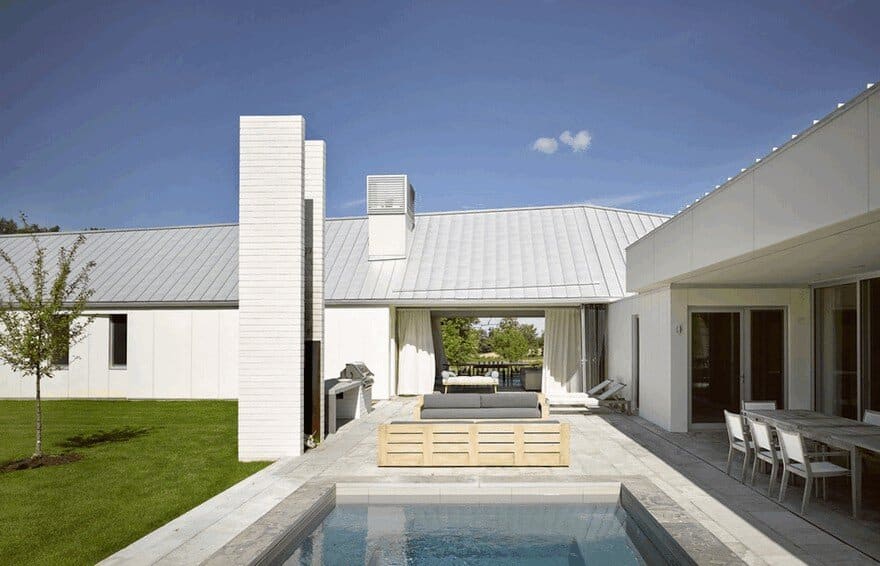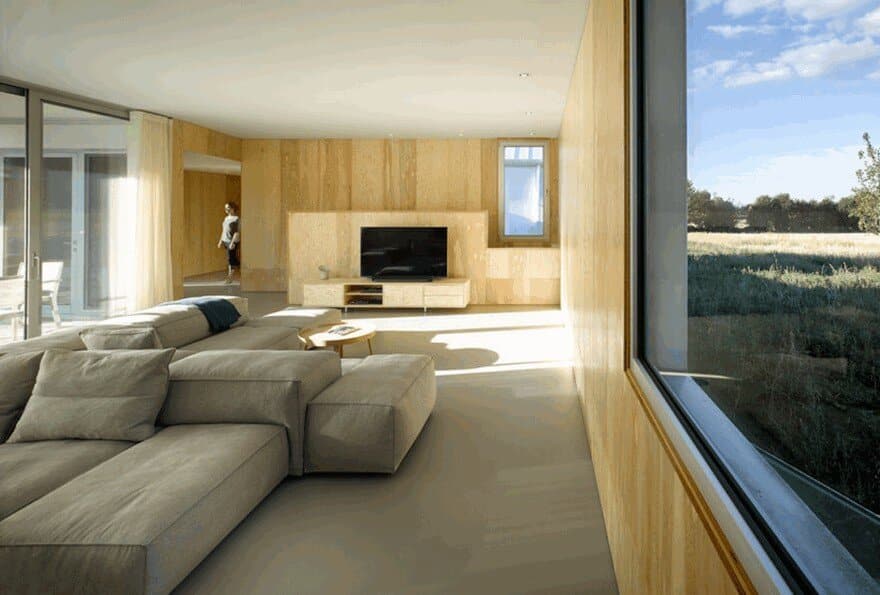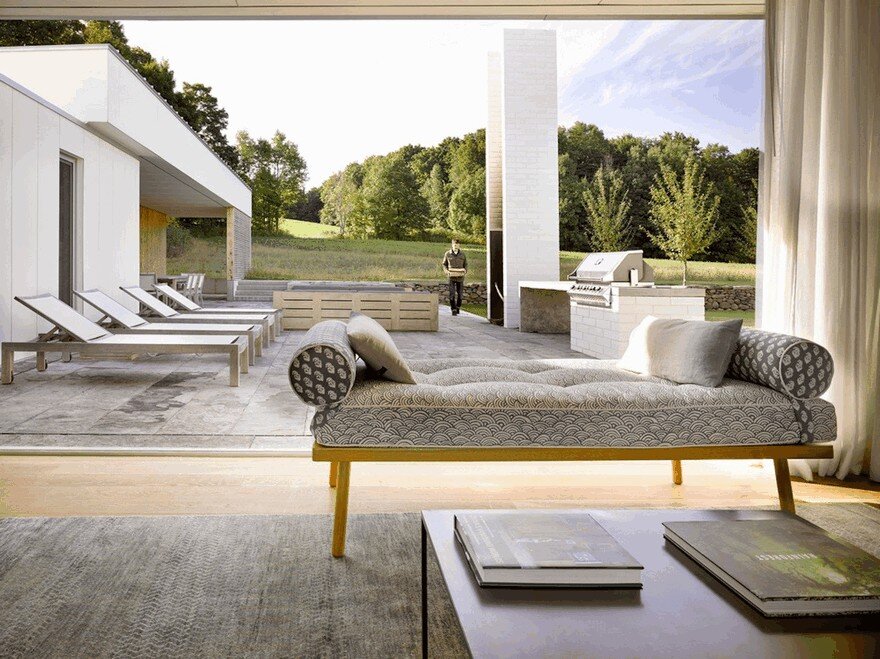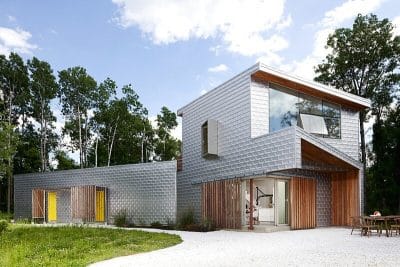Project: Compass Weekend House
Architects: Superkül
Location: Mulmur, Ontario, Canada
Square Footage: 4,300 SF
Photography: Ben Rahn/A-Frame Studio
From the architect: Located on the Niagara Escarpment, this weekend home for a family of six transcends ordinary domestic programming to create a place of spiritual resonance. Through its siting, tectonics and materiality, it balances intimacy and expansiveness, light and dark, land and sky — orienting and heightening one’s experience of the surrounding environment.
With forests to the west, a hill to the south, and 100 acres of fields to the north and east, Compass Weekend House is surrounded by a thicket of trees to provide windbreak and a sense of enclosure. Its distinct white exterior registers the seasons, distinct amidst the green fields of summer, and melding into a winter landscape of waning light and snow.
Constructed with fieldstone found on the property, low retaining walls create a plinth for the house and ground it in the land. Two perpendicular wings enclose an intimately scaled outdoor courtyard. In response to the building’s low-lying horizontality, the totemic form of the outdoor fireplace adds a critical vertical counterpoint, as do the judiciously placed skylights in the soaring pitched roof planes of the house, which allow soft washes of light to illuminate the interior.
Inspired by the historical precedent of the longhouse, all rooms and spaces enjoy pronounced natural light and ventilation. A generously scaled yet intimate family space—including kitchen, dining and living areas—forms the central hub, with bedrooms comfortably separated on either end. Floors and walls made from white oak and knotty white cedar are textured and warm. In contrast, the ceiling above the main space is white, expansive and seemingly boundless. The distinct difference in materiality echoes the meeting of land and sky outside.
On the exterior, the firm’s commitment to an architecture that endures is manifest in the use of low-maintenance construction materials such as cement-board siding, aluminum windows and a steel roof. Phase One of the project is LEED Gold-certified, and this commitment to sustainability carries into Phase Two with a design that prioritizes natural daylighting, passive ventilation, high insulation values and construction waste reduction. The provision of an in-ground geothermal system furthers the goal of what is already exceptional energy performance.
























